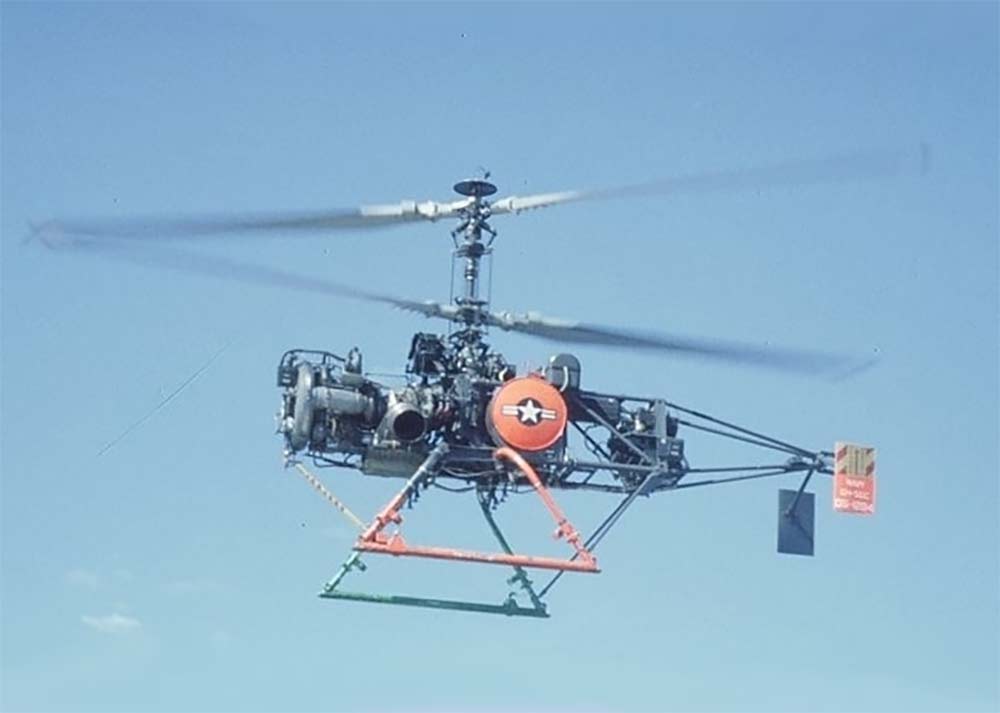The Gyrodyne QH-50 DASH: a pioneering unmanned anti-submarine helicopter, designed for shipboard deployment, enhancing naval warfare capabilities.
In Brief
The Gyrodyne QH-50 DASH (Drone Anti-Submarine Helicopter) was an innovative unmanned aerial vehicle, primarily designed for anti-submarine warfare (ASW). Introduced in the 1960s, it was the U.S. Navy’s first operational, ship-based UAV, equipped to carry torpedoes and other payloads for ASW missions. With a coaxial rotor system, it was compact enough to operate from destroyers and frigates, significantly extending the fleet’s ASW capabilities. The QH-50 was remote-controlled, capable of autonomous flight with pre-programmed instructions, and was a forerunner in integrating UAV technology into naval operations, showcasing the potential of unmanned systems in expanding the operational reach of naval forces.
History of the Development of the Gyrodyne QH-50 DASH
In the context of the Cold War, the U.S. Navy sought advanced technologies to counter the growing Soviet submarine threat. The Gyrodyne QH-50 DASH was developed in response to this need, offering a stand-off capability to detect and attack submarines far beyond the range of shipboard weapons. The development was initiated under the auspices of the U.S. Navy’s DASH program in the late 1950s, with the first flight occurring in 1962.
The primary objective was to provide an unmanned platform capable of delivering torpedoes while being controlled from the ship, thereby keeping the host vessels outside enemy submarine threat ranges. The program was revolutionary, signaling a shift towards unmanned systems in naval operations and extending the defensive and offensive capabilities of the fleet’s existing ships, particularly in anti-submarine warfare.
Design of the Gyrodyne QH-50 DASH
The QH-50 featured a distinctive coaxial rotor design, eliminating the need for a tail rotor and allowing a compact footprint suitable for shipboard operations. This design provided stability and control, crucial for the precise requirements of ASW missions. The airframe was lightweight, constructed to carry a payload of two torpedoes or other equipment like sonobuoys or electronic countermeasures.
The UAV was designed to be remotely piloted from the ship, with a data link providing control and telemetry. It incorporated an automatic stabilization system, which was a significant advancement at the time, allowing it to hover autonomously and conduct missions even in adverse weather conditions. However, the advanced technology and operational concept brought challenges, including the complexity of integrating the system onto existing ships and the training required for operators.

Performance of the Gyrodyne QH-50 DASH
The QH-50 was powered by a piston engine, later models upgraded to a more powerful turbine engine, enhancing its payload capacity and operational range. It had a top speed of approximately 80 knots (92 mph, 148 km/h) and could reach altitudes up to 12,000 feet (3,658 meters), with an endurance of around 2-3 hours, depending on the mission load and operational parameters.
The UAV’s performance was notable for its time, providing a previously unattainable capability for surface ships to engage underwater threats at a distance. Its ability to carry and deploy torpedoes autonomously or under remote control allowed for a broader operational scope against enemy submarines, enhancing the fleet’s ASW capabilities without risking crewed aircraft or the ships themselves.
Variants of the Gyrodyne QH-50 DASH
The QH-50 series saw several variants, from the initial QH-50C, which was the most widely used version, to the QH-50D, which featured improved engines and enhanced payload capabilities. Each variant was tailored to meet specific operational requirements, with modifications in engine power, endurance, payload capacity, and control systems. The QH-50D, in particular, represented the culmination of the series with its extended range, higher altitude ceiling, and increased reliability.
Military Use and Combat of the Gyrodyne QH-50 DASH
The QH-50 DASH was deployed extensively by the U.S. Navy on numerous classes of warships, including destroyers and frigates, primarily for ASW missions. Its operational use highlighted the strategic value of UAVs in extending the capabilities of naval forces, providing a safer and cost-effective solution for submarine detection and engagement.
Although not engaged in direct combat, the QH-50’s value was in its deterrent effect and its enhancement of the fleet’s ASW capabilities. It participated in various exercises and operations, demonstrating the potential of unmanned systems in naval warfare. The program’s eventual phasing out was due to several factors, including technological advancements in submarine quieting, the introduction of more advanced manned helicopters, and the challenges associated with maintaining the sophisticated control systems of the drones.
The Gyrodyne QH-50 DASH represented a significant milestone in the integration of unmanned systems into naval operations, setting a precedent for future developments in UAV and UCAV technology. Its deployment marked a shift towards automated systems in warfare, extending the operational reach of naval forces and enhancing their ASW capabilities. The legacy of the QH-50 continues to influence modern UAV development, underscoring the enduring value of unmanned systems in augmenting military capabilities and operational flexibility.
Back to the Drones, UAVs, UCAVs page